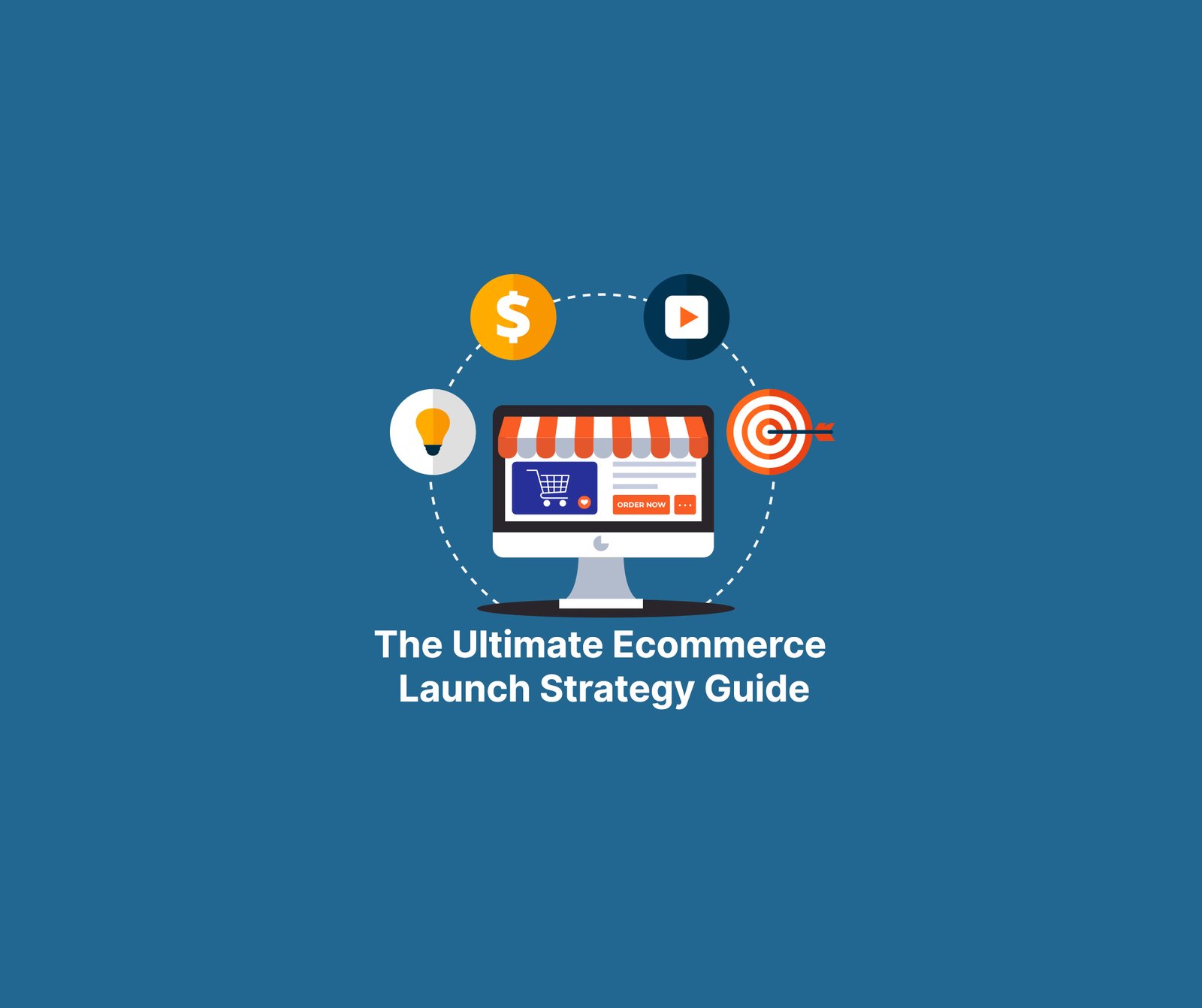E-commerce has revolutionized the way we shop, turning traditional retail on its head. From the rise of online marketplaces to the shift in consumer buying habits, the digital retail environment has experienced rapid growth and transformation. Today, e-commerce is not just about purchasing products online—it’s about creating seamless, personalized, and efficient shopping experiences that meet the demands of a tech-savvy customer base.
As the e-commerce landscape continues to evolve, businesses must adapt to stay competitive. This article explores the current state of e-commerce, emerging trends, and strategies that can help businesses navigate the future of online retail.
1. The E-Commerce Boom: Why It’s Here to Stay
The growth of e-commerce is undeniable. According to recent reports, global e-commerce sales are expected to surpass $5 trillion by the end of 2025. This growth is driven by several factors, including:
-
Convenience: Consumers enjoy the ability to shop from anywhere, at any time. E-commerce provides the convenience of browsing and buying products without the need to leave the home, which has been particularly appealing during the COVID-19 pandemic.
-
Wide Product Selection: E-commerce platforms offer an extensive range of products that might not be available in physical stores. Whether it’s niche products or exclusive brands, online shopping allows consumers to access a variety of options with just a few clicks.
-
Price Comparisons and Reviews: Consumers can easily compare prices, check product reviews, and read detailed descriptions before making a purchase decision. This transparency helps buyers make informed choices.
-
Mobile Shopping: With the widespread use of smartphones, mobile commerce has become a significant driver of e-commerce growth. The rise of mobile apps and optimized websites has made shopping on the go more accessible than ever before.
2. Personalization: A Key Driver of Customer Loyalty
One of the most significant trends in e-commerce today is the focus on personalized shopping experiences. Personalization involves tailoring the shopping experience to individual customers based on their browsing history, preferences, and past purchases. Personalization can take many forms, including:
-
Product Recommendations: Using data analytics and AI, online stores can recommend products that a customer is likely to be interested in based on their previous interactions with the site. This not only increases the likelihood of a sale but also enhances the shopping experience by making it more relevant.
-
Personalized Offers: Personalized discounts, loyalty rewards, and promotions based on a customer’s purchasing behavior can foster customer loyalty and drive repeat business. Special birthday discounts or “recommended for you” offers based on previous purchases are just a few examples of how e-commerce businesses are personalizing their marketing efforts.
-
Tailored Content: Personalization extends beyond product recommendations. It includes creating content that resonates with the individual. Whether it’s an email campaign or a blog post, customizing the content to meet a customer’s interests can significantly improve engagement and conversions.
By leveraging data to understand customers’ needs and preferences, e-commerce businesses can create tailored experiences that make customers feel valued, leading to greater retention and lifetime value.
3. The Importance of Mobile-First E-Commerce
The mobile-first approach is no longer optional for e-commerce businesses—it’s essential. With more consumers using their smartphones for shopping, mobile commerce (m-commerce) has rapidly become one of the primary ways people make purchases. Businesses that fail to optimize their websites and apps for mobile devices risk losing out on a significant portion of potential customers.
-
Mobile-Optimized Websites: A mobile-friendly website is critical to ensure that users have a smooth and pleasant shopping experience on smaller screens. This includes fast-loading pages, easy-to-navigate interfaces, and responsive design that adapts to different devices.
-
Mobile Apps: Many e-commerce brands are investing in mobile apps that offer exclusive features such as one-click ordering, push notifications for personalized deals, and streamlined checkout experiences. Apps also provide customers with a more engaging and seamless shopping experience, which encourages repeat purchases.
-
Mobile Payments: The rise of mobile payment options, such as Apple Pay, Google Pay, and PayPal, has made it easier for consumers to make secure and quick purchases. Offering multiple payment options enhances the user experience and reduces friction at the point of sale.
With the growing prevalence of mobile shopping, businesses must prioritize mobile optimization to capture this large and expanding market.
4. Social Commerce: The Intersection of Shopping and Social Media
Social media has become a powerful tool for e-commerce businesses, not only for brand awareness and engagement but also for direct sales. Social commerce, which refers to the ability to make purchases directly through social media platforms, is an emerging trend that is shaping the future of e-commerce.
-
Shoppable Posts: Platforms like Instagram and Facebook allow businesses to create shoppable posts, where users can click on a product image to view details and make a purchase without leaving the app. This creates a seamless shopping experience that keeps users engaged within the platform.
-
Influencer Marketing: Social media influencers play a key role in driving sales for e-commerce brands. By partnering with influencers whose followers align with the brand’s target market, businesses can leverage social proof and create authentic connections with their audience.
-
Live Shopping: Live-streaming shopping events, where influencers or brand representatives showcase products in real-time, has gained popularity, especially in markets like China. These events allow viewers to interact, ask questions, and make purchases instantly, creating a dynamic and engaging shopping experience.
Social commerce offers a new way for businesses to connect with consumers and sell products, capitalizing on the popularity of social media and the ease of making purchases directly through these platforms.
5. Subscription-Based Models: A Steady Revenue Stream
Subscription services have become increasingly popular in the e-commerce world, offering businesses a predictable and steady revenue stream while providing customers with convenience and personalized experiences. Examples of subscription-based e-commerce models include:
-
Product Subscription Boxes: From beauty products to snacks and fitness gear, subscription boxes offer customers curated products delivered on a regular basis. These boxes can be tailored to customer preferences, creating a personalized experience.
-
Subscription Services for Digital Products: Streaming platforms, digital publications, and online courses have embraced subscription-based models. Customers pay a monthly or yearly fee for access to exclusive content or services, providing businesses with recurring revenue.
-
Auto-Replenishment Services: E-commerce businesses in industries like household goods, pet supplies, and personal care are offering auto-replenishment options, where customers can set up recurring orders for frequently purchased items, such as toiletries or pet food.
Subscription-based models help build long-term relationships with customers, reduce churn, and increase lifetime value, making them an attractive option for businesses looking for stable revenue.
6. The Power of Artificial Intelligence in E-Commerce
Artificial intelligence (AI) is transforming the e-commerce industry by enabling businesses to automate processes, personalize experiences, and make data-driven decisions. Some of the ways AI is being used in e-commerce include:
-
Chatbots: AI-powered chatbots are being used to provide instant customer service, answer questions, and assist with the shopping process. These bots can handle multiple customers simultaneously, improving efficiency and customer satisfaction.
-
Product Recommendations: AI algorithms analyze customer behavior and predict what products they are likely to purchase next, offering personalized recommendations that increase the chances of conversion.
-
Supply Chain Optimization: AI can help e-commerce businesses optimize their supply chains by predicting demand, managing inventory levels, and reducing delivery times. This leads to more efficient operations and better customer experiences.
As AI technology continues to evolve, it will play an even more significant role in streamlining operations, enhancing customer experiences, and driving e-commerce growth.
7. Sustainability in E-Commerce: Meeting Consumer Demand for Ethical Practices
With increasing awareness of environmental issues, consumers are becoming more conscious of the brands they support. Sustainability has become a key consideration for many shoppers, and e-commerce businesses must respond to this demand for ethical and eco-friendly practices.
-
Sustainable Packaging: Consumers are increasingly seeking brands that use eco-friendly packaging, such as biodegradable materials or recyclable packaging. Businesses that reduce waste and minimize their environmental footprint can attract eco-conscious shoppers.
-
Ethical Sourcing and Fair Trade: Brands that prioritize ethical sourcing and support fair trade practices are appealing to consumers who want to ensure that the products they purchase are made under fair working conditions.
-
Carbon Neutral Shipping: Many e-commerce companies are adopting carbon-neutral shipping options to reduce their environmental impact. This involves offsetting the carbon emissions generated by shipping through initiatives such as planting trees or investing in renewable energy projects.
Sustainability is not just a trend—it’s becoming a necessity for businesses that want to appeal to a growing base of environmentally-conscious consumers.
Conclusion
The future of e-commerce is bright, with opportunities for businesses to innovate and adapt to the changing needs and expectations of consumers. From the rise of mobile-first shopping to the importance of personalized experiences and social commerce, the e-commerce industry is continuously evolving. By embracing these trends and leveraging technology, businesses can stay competitive and provide customers with seamless, engaging, and convenient shopping experiences.
As e-commerce continues to grow, businesses that are agile, data-driven, and customer-focused will be best positioned for long-term success. The key to thriving in this dynamic landscape is staying ahead of the curve, meeting consumer expectations, and adapting to new technologies that drive growth.


